When I set out to list the 10 biggest cats in the world, I didn’t realize what a challenge it would be. That’s because there is no definitive answer. There is so much variation in size between individuals of the same cat species, between sexes, between different parts of their range, and between subspecies.
Then there is the challenge of deciding what exactly to measure. Do you use dimensions like body length, body plus tail, or shoulder height? Do you use weight to determine the biggest cat species?
And if you do use weight, should it be average weight across all members of the species, average of adult males, the high end of the normal weight range, or the heaviest individual ever recorded?
*This article may contain affiliate links. We receive a small commission at no extra cost to you.*
I decided that for my biggest cats list, I wouldn’t include obese captive zoo animals or unnatural hybrids (yes there is a “liger”, a lion/tiger hybrid, in captivity that weighs 922 pounds). I chose to rank them by weight, based on the high end of the wild weight range as listed by the Cat Specialist Group, one of the leading authorities on types of wild cats and their conservation.
What are the 10 largest cats in the world? Here is the big cats list:
- Tiger (up to 715 pounds)
- Lion (up to 600 pounds)
- Jaguar (up to 300 pounds)
- Leopard (up to 200 pounds)
- Puma (up to 175 pounds)
- Cheetah (up to 145 pounds)
- Snow Leopard (up to 110 pounds)
- Eurasian Lynx (up to 55 pounds)
- Sunda Clouded Leopard (up to 55 pounds)
- Mainland Clouded Leopard (up to 50 pounds)
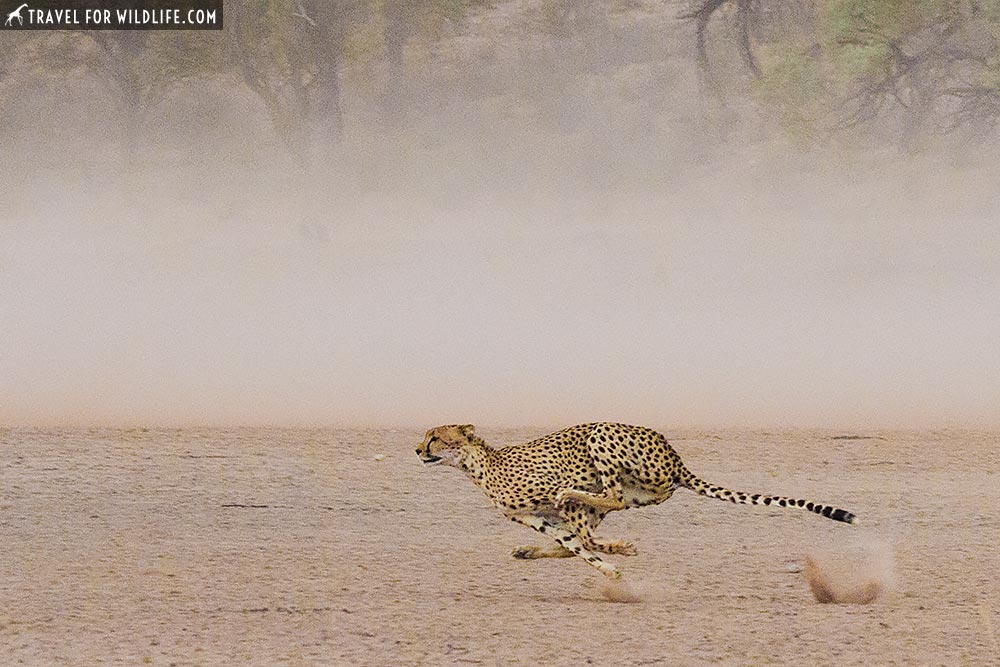
I started by making a table with all the available data, listing all 38 accepted species of wild cats, including weight range, length of body and tail, and conservation status. Though keep in mind, some recognize as many as 40 wild cat species if you separate the wildcat into the European and the Afro-Asiatic (Felis lybica), and separate the Sunda Leopard Cat (Prionailurus javanensis) from the Mainland leopard cat (Prionailurus bengalensis). Then I ranked them by the high end of their weight range. I found a few surprises along the way! You can find that table, ranking all types of wild cats by size, at the end of this post.
But for now lets get to the good stuff and jump right into my list of the top ten biggest cats in the world. And if you love wild cats and want to learn more, check out our favorite book about wild cat species: Wild Cats of the World by Luke Hunter.
Where to see the biggest cats in the world?
Ready to see some of the biggest cats in the world? check out this family friendly 8-day safari in Kenya that will take you to see lions, leopards, and cheetahs! Or this 10-day safari in Kruger and Kalahari where you’ll visit two iconic destinations in South Africa.
Top 10 Biggest Cats in the World
1. Tiger (Panthera tigris) – The biggest cat in the world
Weight: 165 to 715 pounds (75-325 kg)
Body length: 59 to 90 inches (150-230 cm)
Tail Length: 35 to 43 inches (90-110 cm)
Location: Asia
Conservation Status: Endangered
There’s no question about it, tigers are the biggest cat species in the world. When it comes to sheer mass, no other cat comes close. Big tigers top out at around 715 pounds in the wild. That’s more than than the weight of 4 adult men.
Tigers have been considered to have 6 living subspecies and 3 other subspecies that recently went extinct. Today, the organization of tiger subspecies is under much debate, but one thing is clear, all tigers are endangered and need our protection. There are only about 3000 left in the wild. It seems crazy that we could allow this most iconic member of the cat family to disappear forever.
One wild male tiger that was shot in 1950 in the Sikhote-Alin mountains of the USSR was reported to have been 846 pounds. Another tiger shot in India in 1967 weight 857 pounds when it was killed. He was definitely the biggest tiger in the world, which made him the biggest cat in the world. Now its stuffed body is in the natural history museum in Washington DC. Please don’t shoot any more tigers!
2. Lion (Panthera leo)
Weight: 240 to 600 pounds (110-272 kg)
Body length: 54 to 98 inches (137-250 cm)
Tail Length: 24 to 40 inches (60-100 cm)
Location: Africa
Conservation Status: Vulnerable
Tigers may win the prize for biggest cats in the world, but lions come in at an impressive second. Big lions may actually have a longer body length than the biggest tigers (up to 98 inches for lions compared to the tiger’s 90 inches.) That’s over 8 feet from the tip of the nose to the base of the tail! Add another 3 feet for the tail and you’re looking at an 11 foot-long beast! That’s almost twice as long as I am tall!
Male lions have an impressive mane that makes them look even bigger. One wild male lion, killed near Hectorspruit in South Africa in 1936, was reported to have been 690 pounds. A captive lion in a zoo in Essex, UK in 1970 weighed 826 pounds. He was likely the biggest lion in the world.
Having spent a fair amount of time around lions in the wild (in Kruger and in the Kalahari) I can tell you they are very imposing animals to behold at close range (from inside a vehicle, thankfully). For info on lions diet check out our article What Do Lions Eat. Lions are classified as vulnerable and need our protection in the wild!
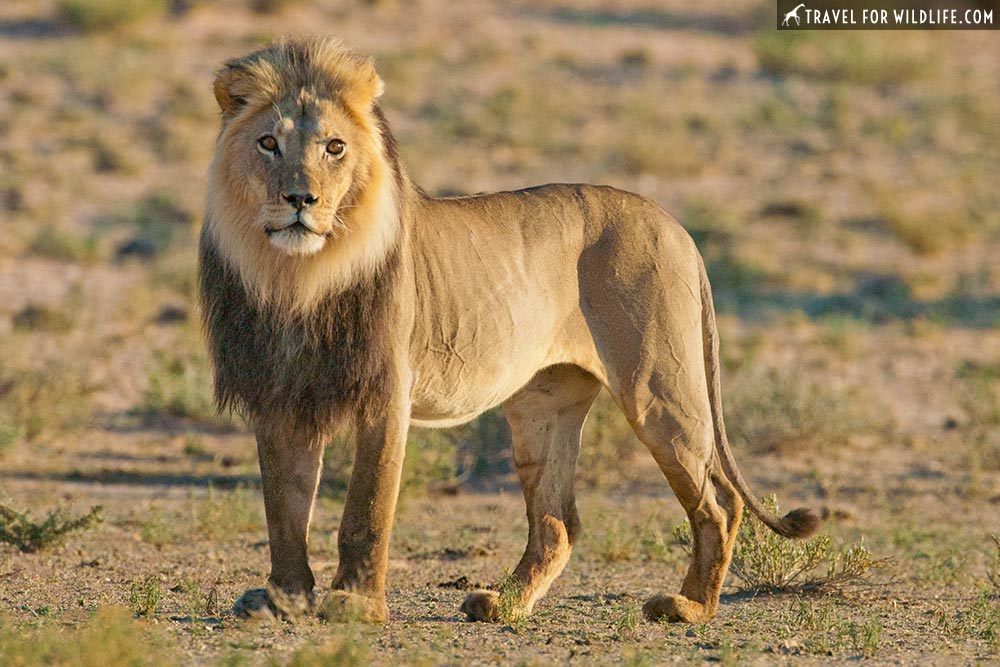
3. Jaguar (Panthera onca)
Weight: 80 to 300 pounds (36-136 kg)
Body length: 43 to 67 inches (110-170 cm)
Tail Length: 17 to 31 inches (44-80 cm)
Location: North & South America
Conservation Status: Near Threatened
Choosing number three of the biggest cats in the world is a little trickier. While the leopard below has a longer body and a longer tail, the jaguar definitely wins for mass, making the jaguar the third on the big cats list. Topping out at 300 pounds, Jaguars are built for power (kind of like a Rottweiler) with a massive head and robust jaw muscles. A 326 pound wild male jaguar was recorded from the Pantanal in Brazil, and another specimen from Brazil weighed 286 pounds.
These adaptable cats are found in forest habitats from South America to northern Mexico (see range map) and there is even one or two still hanging on in the southern United States. Classified as Near Threatened by the IUCN, these cats need our protection. If you want to learn more, check out my favorite book about jaguars: An Indomitable Beast, written by the CEO of Panthera, Alan Rabinowitz. Panthera is an amazing organization devoted to the conservation of wild cats and their habitats. Support them!
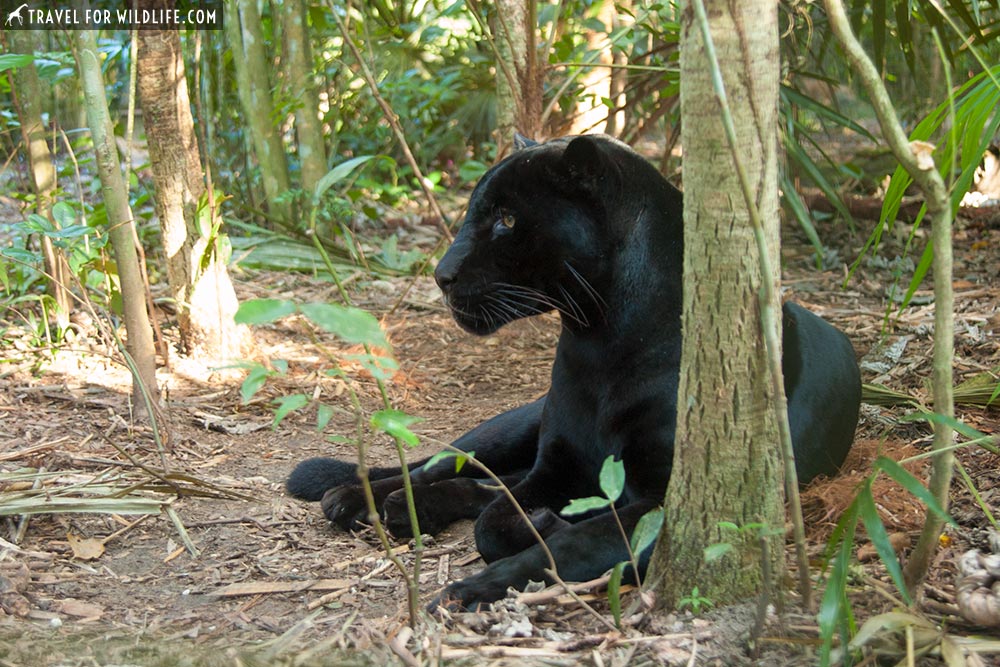
4. Leopard (Panthera pardus)
Weight: 38 to 200 pounds (17-90 kg)
Body length: 36 to 75 inches (91-191 cm)
Tail Length: 20 to 40 inches (51-101 cm)
Location: Africa, Asia
Conservation Status: Vulnerable
Of all the types of big cats that I’ve had the honor of spending time with in the wild, the leopard is the one I most respect, and fear. I’ve learned from months of tracking radio-collared leopards that if these cats don’t want to be seen, they won’t. These masters of stealth are one of the most sought after big cats on a wildlife safari because they are so difficult to spot.
They are also incredibly adaptable predators. I once witnessed a leopard killing a crocodile! Here’s the video:
Some say (like the BBC) that the biggest leopards in the world can be found in Yala National Park in Sri Lanka. A one-eyed leopard in Yala, known as Ivan, is considered to be the biggest leopard in the world at around 220 pounds!
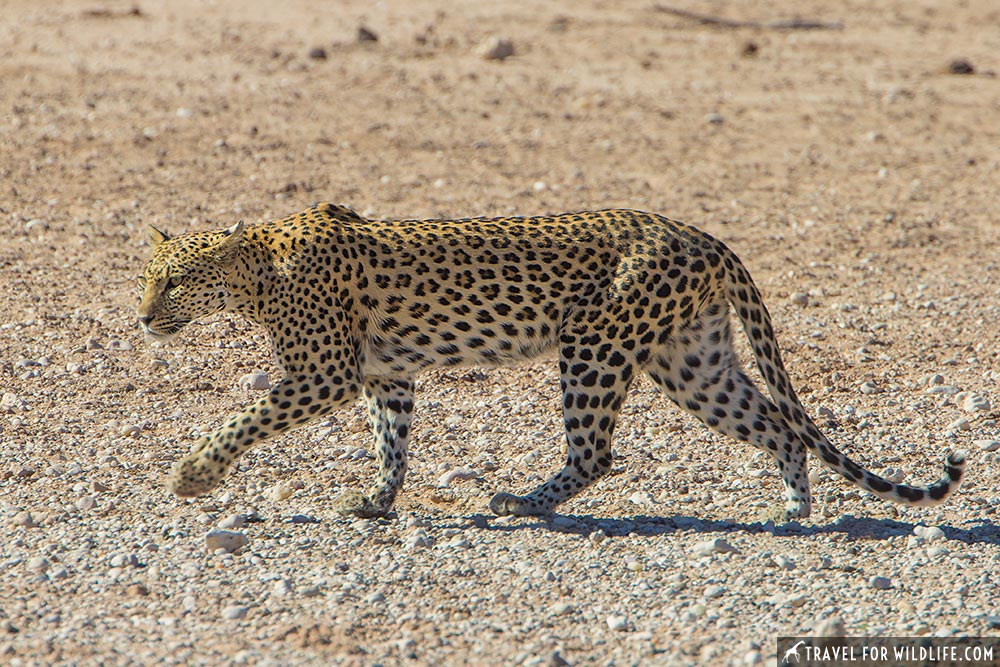
5. Puma (Puma concolor)
Weight: 66 to 175 pounds (30-80 kg)
Body length: 40 to 60 inches (100-150 cm)
Tail Length: 24 to 36 inches (60-90 cm)
Location: North & South America
Conservation Status: Least Concern
The Puma is a cat with many names including Mountain Lion, Cougar, Panther, and occasionally Catamount, whatever you call it, the Puma is a big kitty. It has the largest range of any cat in the Americas, occurring from the southern tip of South America all the way up into Canada. As you may have guessed, pumas can adapt to a wide range of habitats. Some mountain lions even live right in the city of Los Angeles! According to the National Park Service, the largest mountain lion ever recorded was 276 pounds, but this is extremely rare.
6. Cheetah (Acinonyx jubatus)
Weight: 77 to 145 pounds (35-65 kg)
Body length: 45 to 55 inches (113-140 cm)
Tail Length: 24 to 33 inches (60-84 cm)
Location: Africa, Asia
Conservation Status: Vulnerable
Cristina and I have also spent a lot of time in the field with cheetahs, including three months tracking a pair of radio collared males in South Africa. But you don’t need to work in the field to see them, one of the best places to see cheetahs is the Kalahari.
While cheetahs are certainly one of the biggest cats in the world, there are no documented cases of wild cheetahs attacking and killing a person. However, it is still pretty scary having a sedated cheetah wake up in your lap while driving (read the story here). Cheetah Conservation Botswana once collared a 156 pound male in 2014 and he may well be the biggest cheetah ever recorded (though he had recently eaten!)
7. Snow Leopard (Panthera uncia)
Weight: 66 to 110 pounds (30-50 kg)
Body length: 35 to 47 inches (90-120 cm)
Tail Length: 31 to 40 inches (80-100 cm)
Location: Asia
Conservation Status: Vulnerable
Although snow leopards rarely weigh more than 100 pounds, they can still reach a total length of up to 8 feet thanks to their incredibly long tails! In fact, the tail makes up nearly half of their entire body length. They use their enormous tails for balance when hunting in the rocky cliffs of their mountain habitats in Asia, and it also doubles as insulation to wrap around their body on cold nights. Like most of the biggest cats in the world, the snow leopard is listed as vulnerable. Here’s an awesome video clip of a super rare sighting from a Snow Leopard Tour offered by Exodus Travels.
8. Eurasian Lynx (Lynx lynx)
Weight: 38 to 55 pounds (17-25 kg)
Body length: 35 to 47 inches (90-120 cm)
Tail Length: 7 to 9 inches (19-23 cm)
Location: Europe & Asia
Conservation Status: Least Concern
I have to admit, this one kind of surprised me. While the Canada Lynx found here in North America generally only grows up to 25 pounds, it’s cousin the Eurasian lynx can weigh twice as much! There was even a lynx shot in Sweden in 2013 that weighed 74 pounds! (Please stop shooting wild cats!)
Unlike the Snow Leopard above, which can have a tail over three feet long, the Lynx has taken the opposite route with a nubby little tail less than 9 inches long! But like the snow leopard it persists in very cold habitats by growing a dense coat of shaggy fur in the winter. Their huge webbed paws act like snowshoes allowing them to hunt effectively in deep snow.
This powerful hunter can take down prey much larger than itself, including Roe Deer, and occasionally even caribou and moose (known as elk in Europe) due to their vulnerability in deep snow!
Lynx photo by Aconcagua (talk) – Own work, CC BY-SA 3.0
9. Sunda Clouded Leopard (Neofelis diardi)
Weight: 24 to 55 pounds (11-25 kg)
Body length: 27 to 43 inches (69-108 cm)
Tail Length: 24 to 36 inches (61-91 cm)
Location: Asia
Conservation Status: Vulnerable
The Sunda Clouded Leopard was only recently recognized as a distinct species from the Mainland Clouded Leopard (below). According to the Cat Specialist Group, a few million years of isolated development have led to a kinship between the Sunda and the Mainland Clouded Leopard that is comparable to the kinship between the Leopard and the Jaguar. This means that even though they are closely related, they’ve developed a lot of differences, including a different coat pattern.
The Sunda Clouded Leopard only occurs on the islands of Borneo and Sumatra. This secretive rainforest cat has a super-long tail and short legs which allow it to hunt for monkeys in the trees with great skill. Here is a rare glimpse of Sunda Clouded Leopard caught on a camera trap by Riau Ecosystem Restoration in Sumatra.
Clouded leopard photo by www.photosbypaulo.com [CC BY-SA 3.0 or GFDL], from Wikimedia Commons
10. Mainland Clouded Leopard (Neofelis nebulosa)
Weight: 35 to 50 pounds (16-23 kg)
Body length: 27 to 43 inches (69-108 cm)
Tail Length: 24 to 36 inches (61-91 cm)
Location: Asia
Conservation Status: Vulnerable
The Mainland Clouded Leopard, topping out at about 50 pounds, doesn’t get quite as big as its cousin the Sunda Clouded Leopard, placing it at number 10 on the biggest cats in the world. (If I had ranked the two clouded leopards together, then the Bobcat would have come in as number 10 of the biggest cat species in the world.)
Due to its secretive nature and deep forest habitat, there is very little scientific information about the Mainland Clouded Leopard in the wild. They are found in isolated patches of forest in Southeast Asia, from the Himalayan foothills and Southern China, down to the tip of Malaysian Peninsula.
The clouded leopards have the longest canine teeth in relation to skull size of any cats in the world! The name comes from the beautiful large “cloudy” rosette pattern on their coats.
Mainland Clouded Leopard photo by Dr. Raju Kasambe [CC BY-SA 4.0], from Wikimedia Commons
I hope you enjoyed our top ten list of the biggest cats in the world! If you want to see where all the other types of wild cats fit on the list of biggest cat species, check out the complete table below!
All Types of Wild Cats Species (ranked by max weight)
Here’s a table of all the data on all 38 types of wild cats species (data collected from the Cat Specialist Group site) which I used to determine the 10 biggest cats in the world. (You can scroll side to side to see the other columns in the table.)
| Rank | Max kg | Common Name | Scientific Name | Weight range | Body Length | Tail Length | Location | Status |
|---|---|---|---|---|---|---|---|---|
| 1 | 325 kg | Tiger | Panthera tigris | 75-325 kg | 150-230 cm | 90-110 cm | Asia | Endangered |
| 2 | 272 kg | Lion | Panthera leo | 110-272 kg | 137-250 cm | 60-100 cm | Africa | Vulnerable |
| 3 | 148 kg | Jaguar | Panthera onca | 36-148 kg | 110-170 cm | 44-80 cm | North & South America | Near Threatened |
| 4 | 90 kg | Leopard | Panthera pardus | 17-90 kg | 91-191 cm | 51-101 cm | Africa, Asia | Vulnerable |
| 5 | 80 kg | Puma | Puma concolor | 30-80 kg | 100-150 cm | 60-90 cm | North & South America | Least Concern |
| 6 | 65 kg | Cheetah | Acinonyx jubatus | 35-65 kg | 113-140 cm | 60-84 cm | Africa, Asia | Vulnerable |
| 7 | 50 kg | Snow leopard | Panthera uncia | 30-50 kg | 90-120 cm | 80-100 cm | Asia | Vulnerable |
| 8 | 25 kg | Eurasian lynx | Lynx lynx | 17-25 kg | 90-120 cm | 19-23 cm | Europe & Asia | Least Concern |
| 9 | 25 kg | Sunda clouded leopard | Neofelis diardi | 11-25 kg | 69-108 cm | 61-91 cm | Asia | Vulnerable |
| 10 | 23 kg | Mainland clouded leopard | Neofelis nebulosa | 16-23 kg | 69-108 cm | 61-91 cm | Asia | Vulnerable |
| 11 | 20 kg | Bobcat | Lynx rufus | 6-20 kg | 50-120 cm | 9-25 cm | North America | Least Concern |
| 12 | 18 kg | Serval | Leptailurus serval | 7-18 kg | 59-100 cm | 20-38 cm | Africa | Least Concern |
| 13 | 18 kg | Caracal | Caracal caracal | 6-18 kg | 80-100 cm | 20-34 cm | Africa, Asia | Least Concern |
| 14 | 16 kg | Asiatic golden cat | Catopuma temminckii | 9-16 kg | 71-105 cm | 40-56 cm | Asia | Near Threatened |
| 15 | 16 kg | Iberian lynx | Lynx pardinus | 8-16 kg | 65-92 cm | 11-16 cm | Spain | Endangered |
| 16 | 16 kg | African golden cat | Caracal aurata | 7-16 kg | 65-90 cm | 28-35 cm | Africa | Vulnerable |
| 17 | 16 kg | Fishing cat | Prionailurus viverrinus | 7-16 kg | 65-85 cm | 25-30 cm | Asia | Vulnerable |
| 18 | 15.1 kg | Ocelot | Leopardus pardalis | 8-15.1 kg | 50-101.5 cm | 30-50 cm | North & South America | Least Concern |
| 19 | 12 kg | Canada lynx | Lynx canadensis | 8-12 kg | 73-106 cm | 10-15 cm | North America | Least Concern |
| 20 | 9 kg | Chinese mountain cat | Felis bieti | 5.5-9 kg | 60-85 cm | 29-35 cm | China | Vulnerable |
| 21 | 9 kg | Jungle cat | Felis chaus | 5-9 kg | 58-76 cm | 21-27 cm | Asia | Least Concern |
| 22 | 8 kg | Wildcat | Felis silvestris | 3-8 kg | 45-80 cm | 21.5-37.5 cm | Europe, Asia, Africa | Least Concern |
| 23 | 8 kg | Leopard cat | Prionailurus bengalensis | 1.6-8 kg | 45-65 cm | 20-30 cm | Asia | Least Concern |
| 24 | 7 kg | Jaguarundi | Herpailurus yagouaroundi | 3-7 kg | 48.8-77.5 cm | 27.5-59 cm | Central & South America | Least Concern |
| 25 | 6 kg | Andean cat | Leopardus jacobita | 4-6 kg | 57-65 cm | 41-48 cm | South America | Endangered |
| 26 | 6 kg | Geoffroy’s cat | Leopardus geoffroyi | 3-6 kg | 43-88 cm | 23-40 cm | South America | Least Concern |
| 27 | 5 kg | Pallas’s cat | Otocolobus manul | 3-5 kg | 46-65 cm | 21-31 cm | Asia | Near Threatened |
| 28 | 5 kg | Marbled cat | Pardofelis marmorata | 2-5 kg | 45-62 cm | 36-55 cm | Asia | Near Threatened |
| 29 | 4.9 kg | Margay | Leopardus wiedii | 2.3-4.9 kg | 46-69 cm | 23-52 cm | Central & South America | Near Threatened |
| 30 | 4 kg | Pampas cat | Leopardus colocola | 3-4 kg | 42-79 cm | 22-33 cm | South America | Near Threatened |
| 31 | 4 kg | Borneo bay cat | Catopuma badia | 3-4 kg | 53-67 cm | 32-40 cm | Borneo | Endangered |
| 32 | 3.5 kg | Northern tiger cat | Leopardus tigrinus | 1.8-3.5 kg | 38-59 cm | 20-42 cm | Central & South America | Vulnerable |
| 33 | 3.5 kg | Southern tiger cat | Leopardus guttulus | 1.8-3.5 kg | 38-59 cm | 20-42 cm | South America | Vulnerable |
| 34 | 3.4 kg | Sand cat | Felis margarita | 1.35-3.4 kg | 39-52 cm | 22-31 cm | Africa, Asia | Least Concern |
| 35 | 3 kg | Guiña | Leopardus guigna | 1.5-3 kg | 37-56 cm | 20-25 cm | South America | Vulnerable |
| 36 | 2.5 kg | Black-footed cat | Felis nigripes | 1-2.5 kg | 37-52 cm | 14-20 cm | Africa | Vulnerable |
| 37 | 2 kg | Flat-headed cat | Prionailurus planiceps | 2 kg | 45-52 cm | 13-17 cm | Asia | Endangered |
| 38 | 2 kg | Rusty-spotted cat | Prionailurus rubiginosus | 1-2 kg | 35-48 cm | 20-25 cm | Asia | Near Threatened |
Read This Next
Did you know that the Kodkod is the smallest cat living in the Americas? (also known as the Guina). Discover more interesting animals that start with k in our article: Animals starting With K
Do You Enjoy “The 10 Biggest Cats in the World”? Then Pin it!
If you enjoyed our article The Top Ten Biggest Cats in the World, then please pin it on Pinterest with this pin!

Hal Brindley
Brindley is an American conservation biologist, wildlife photographer, filmmaker, writer, and illustrator living in Asheville, NC. He studied black-footed cats in Namibia for his master’s research, has traveled to all seven continents, and loves native plant gardening. See more of his work at Travel for Wildlife, Truly Wild, Our Wild Yard, & Naturalist Studio.

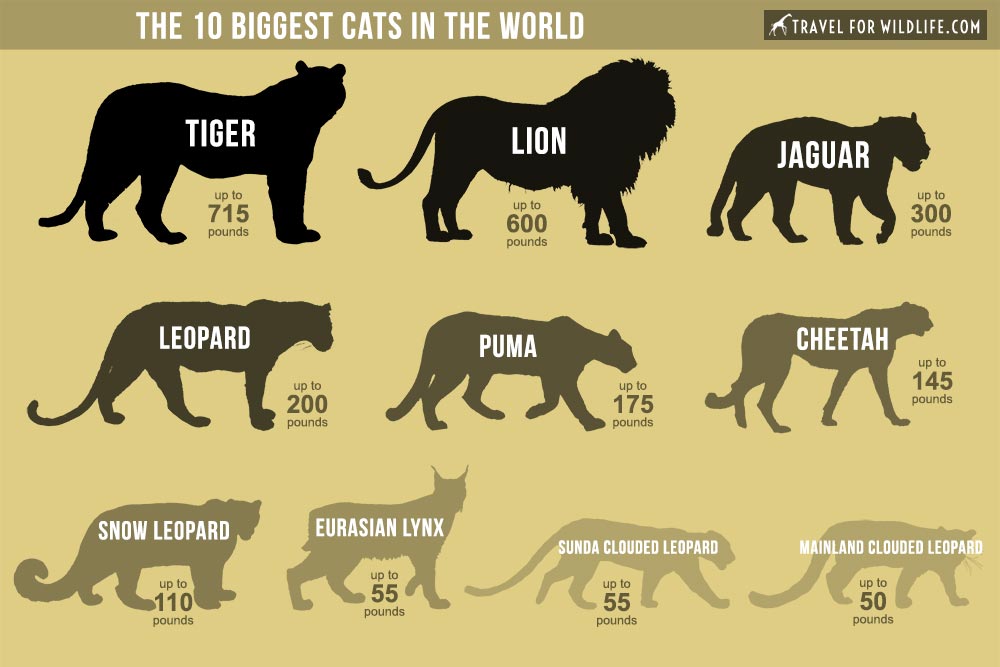
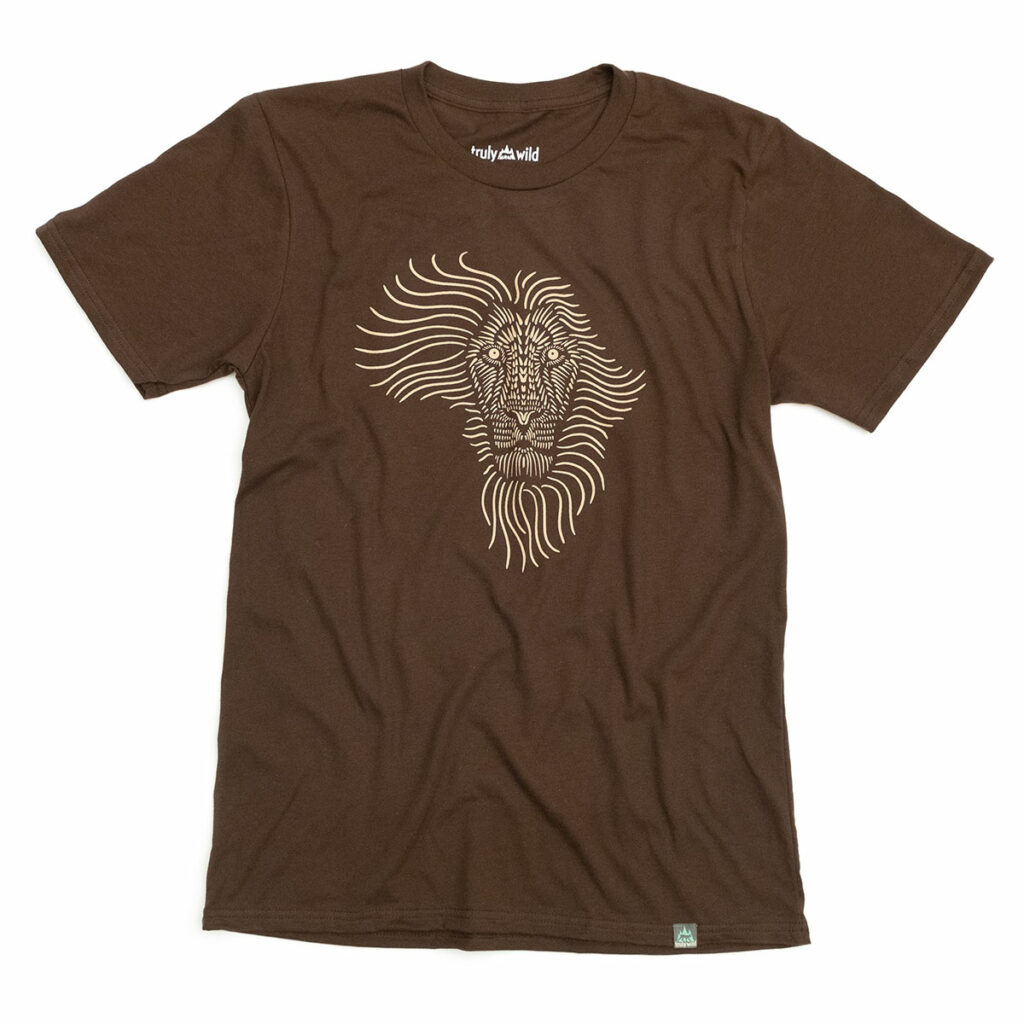

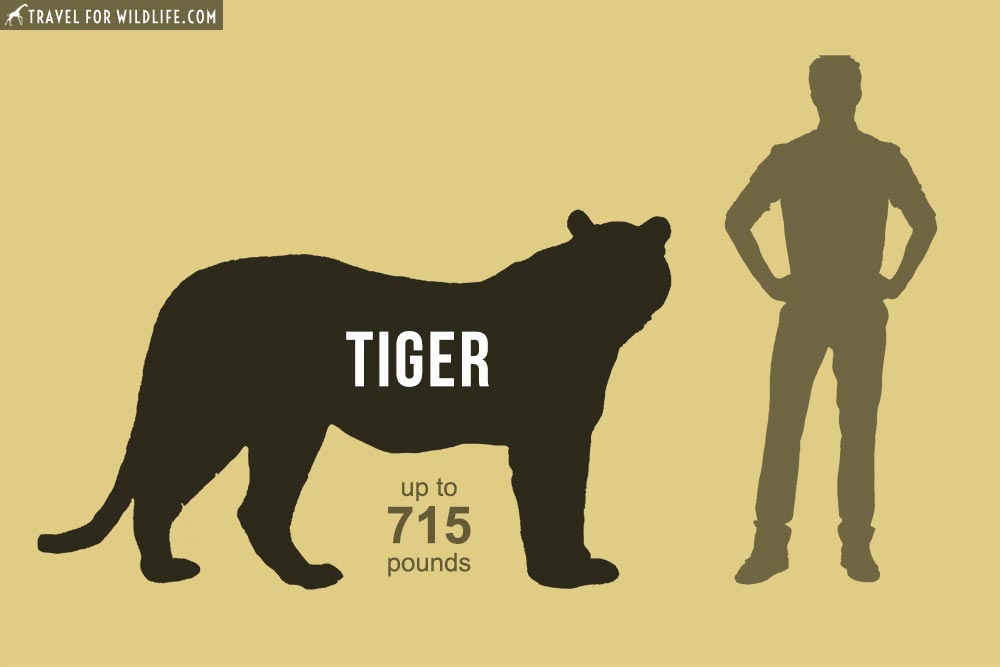
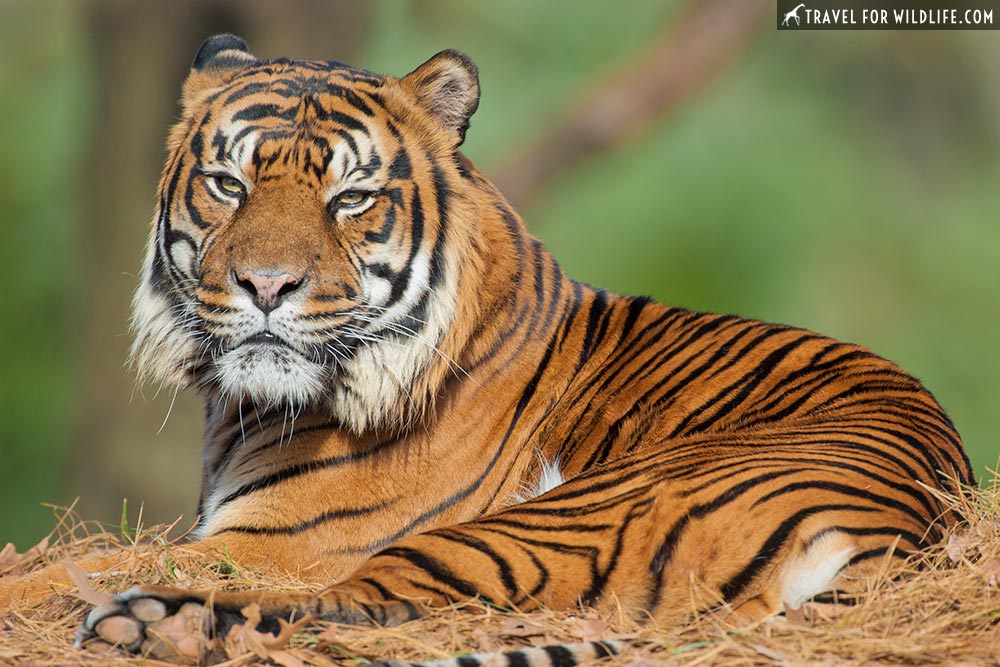
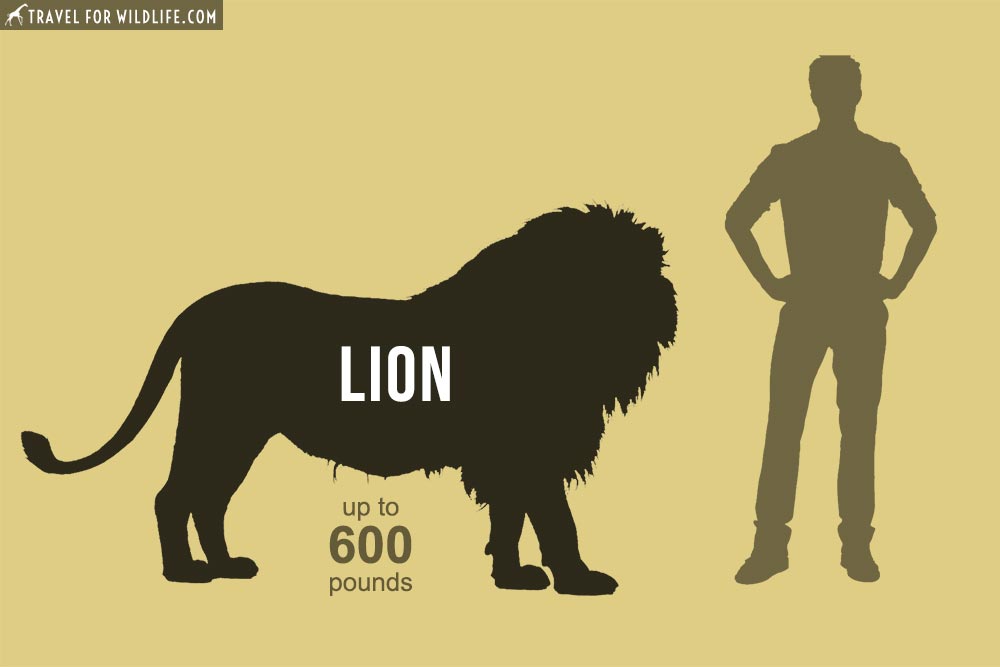
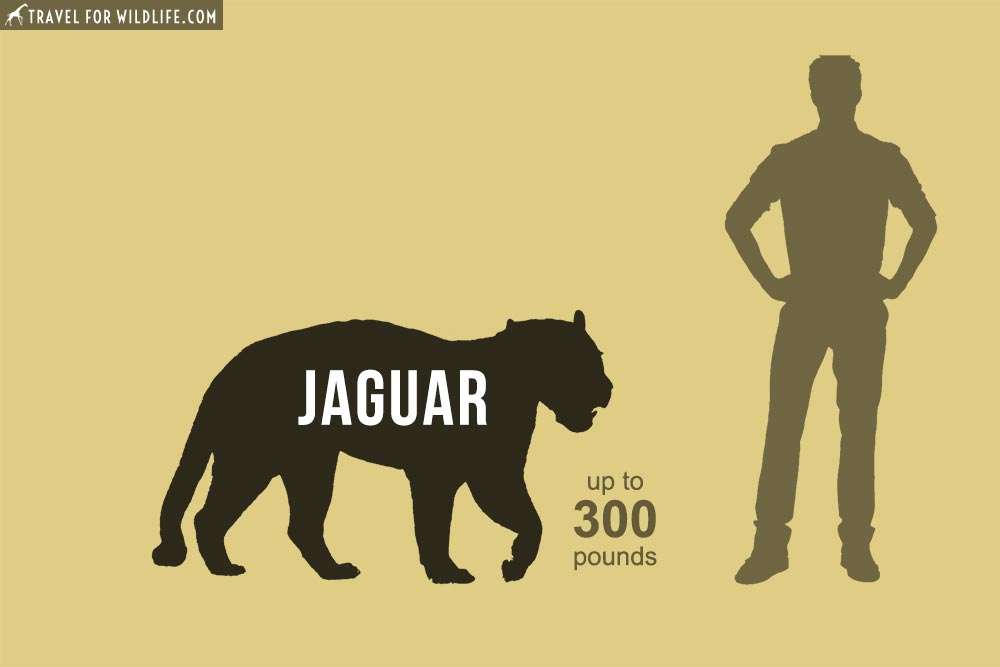
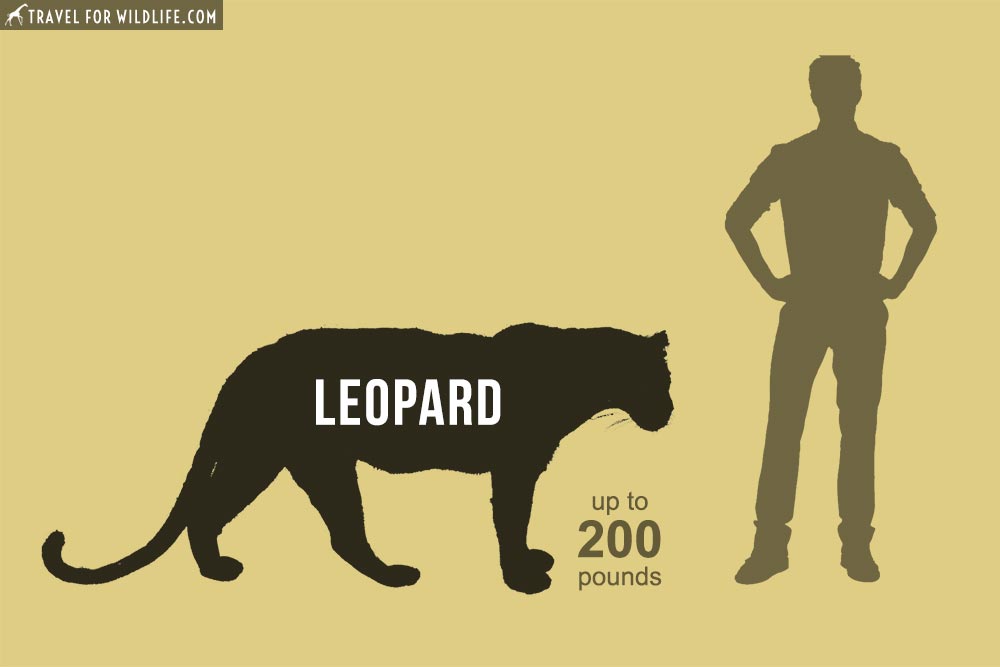
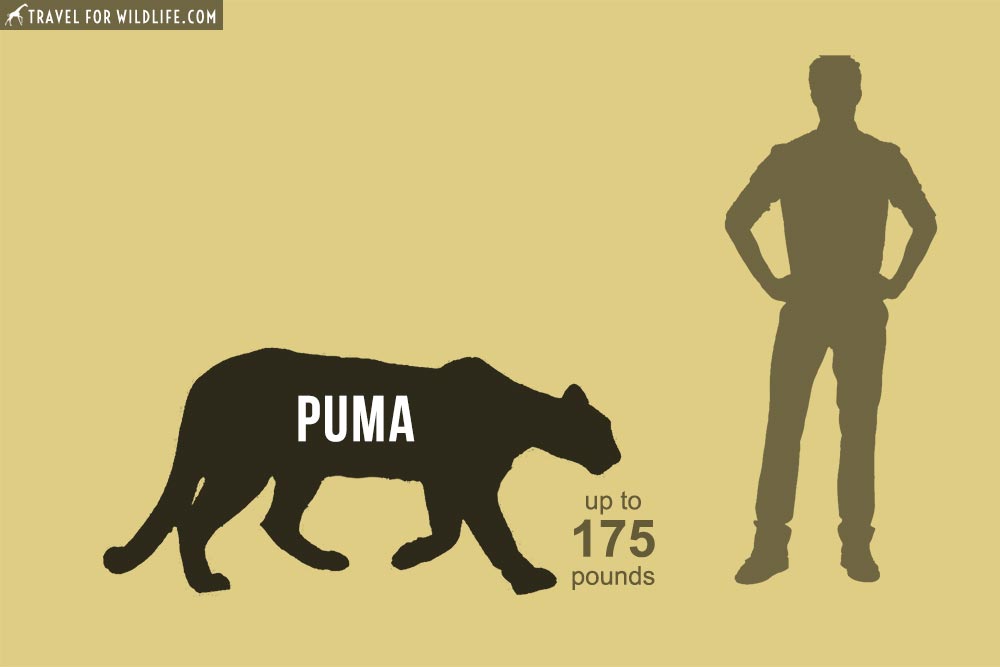
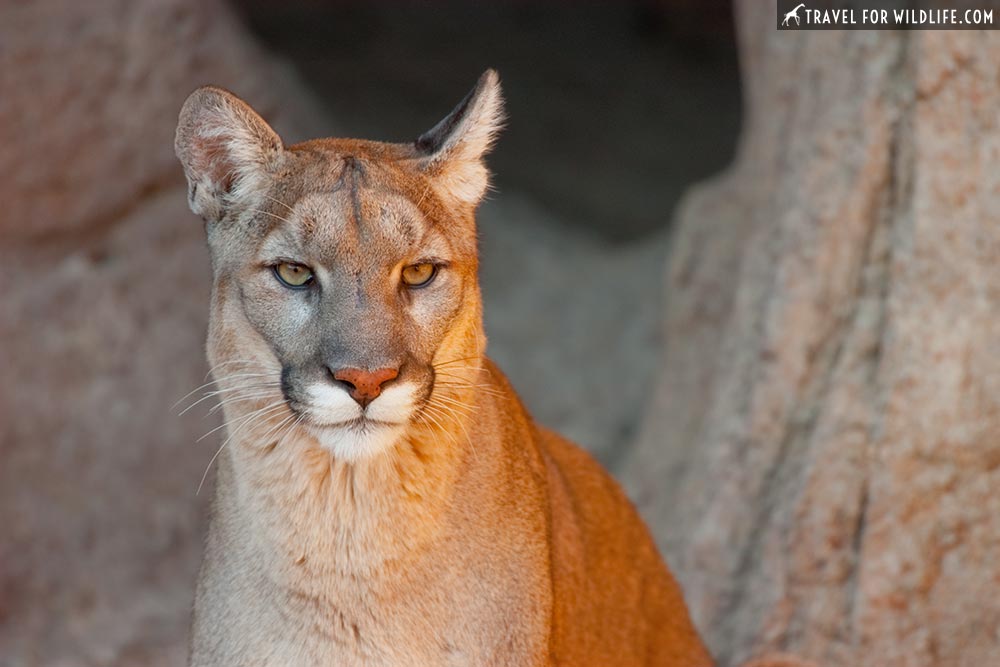
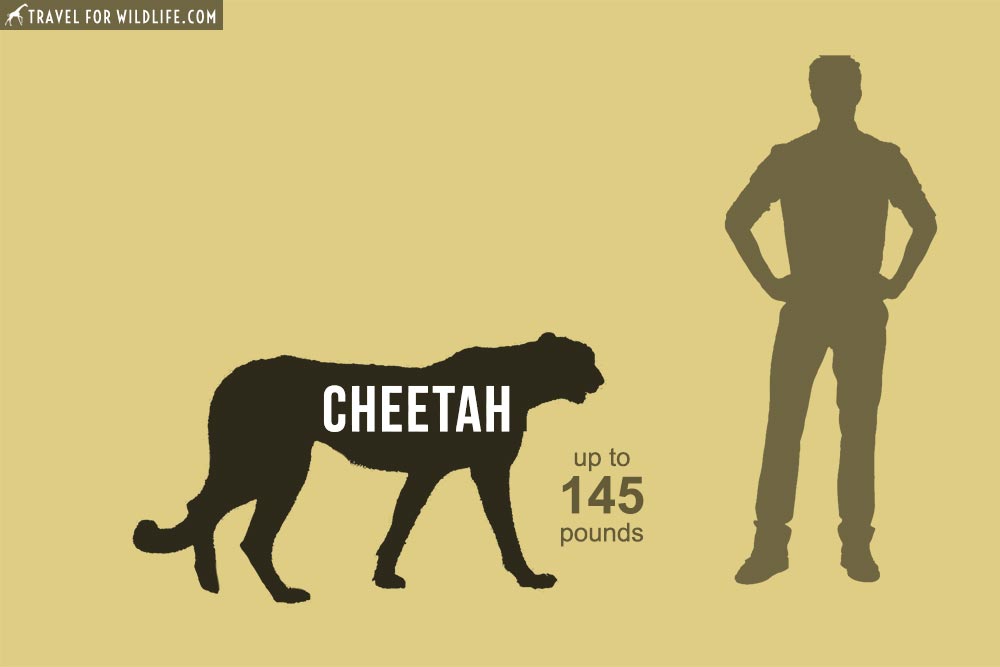
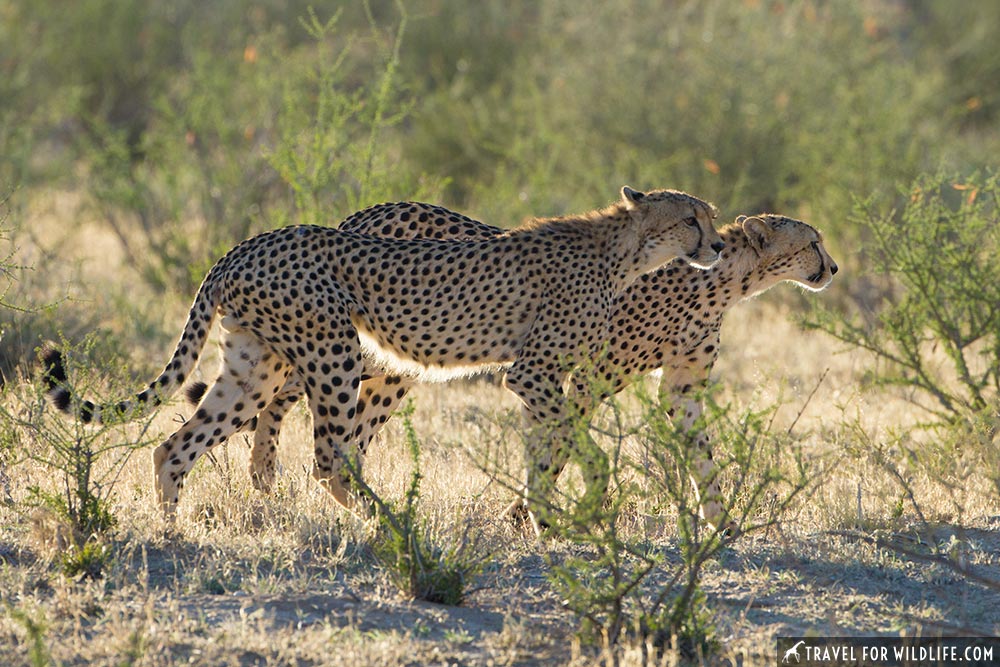
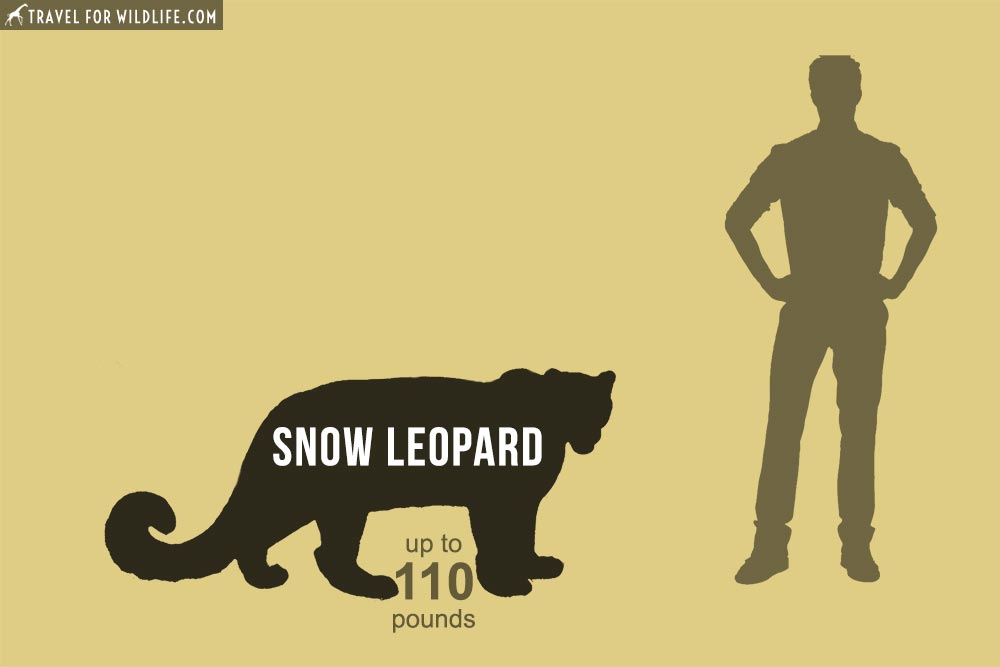
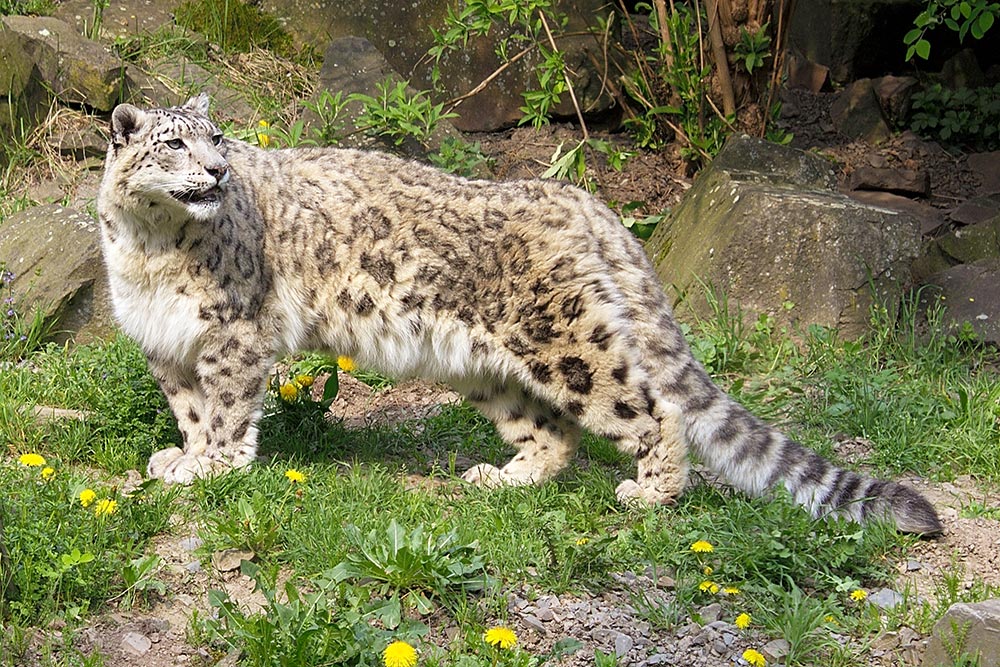
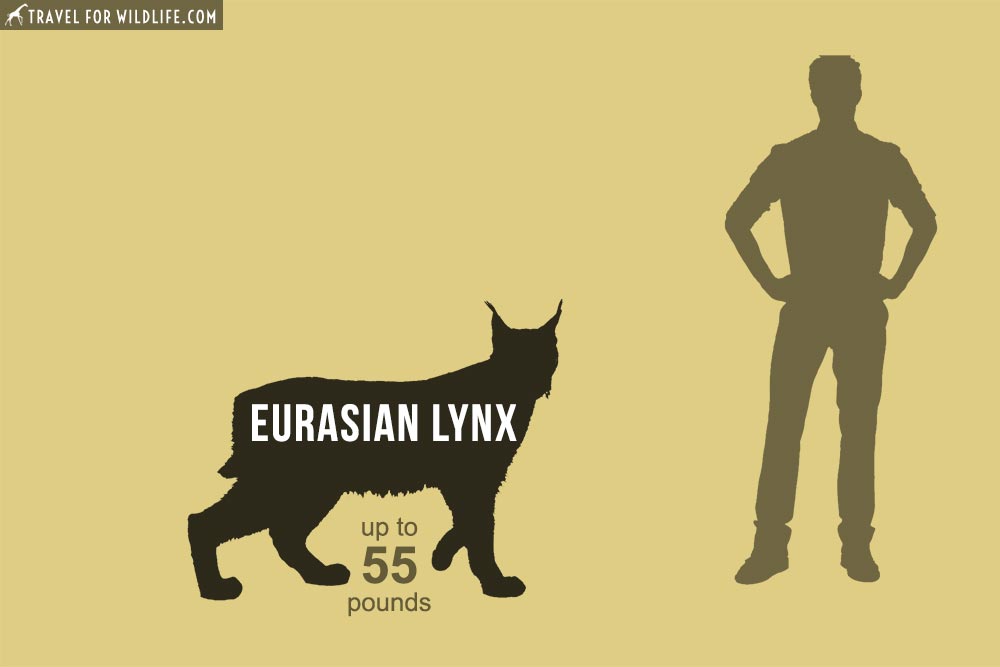
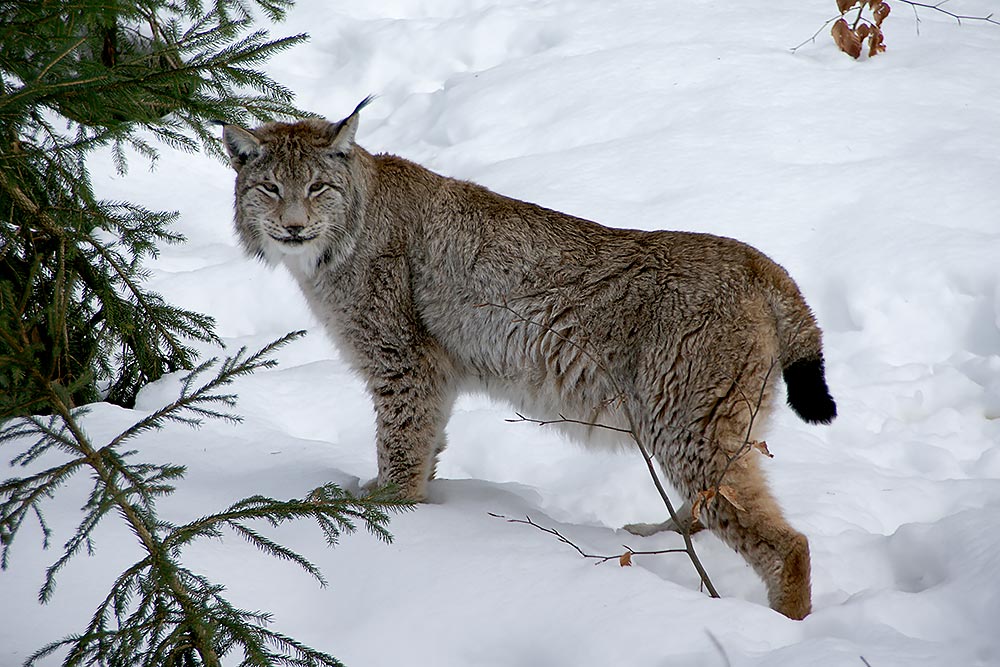
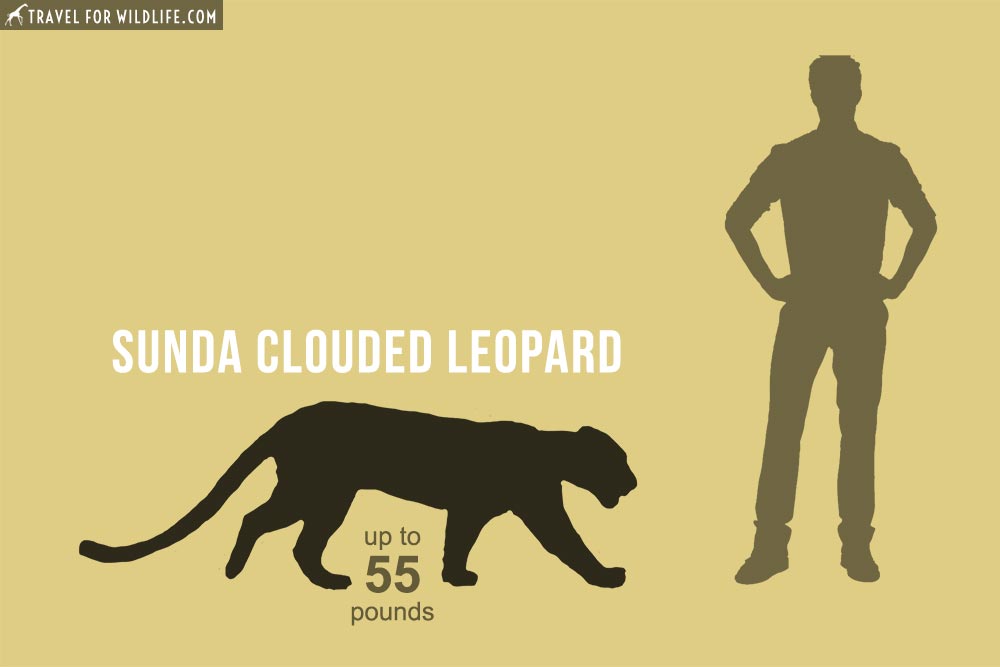
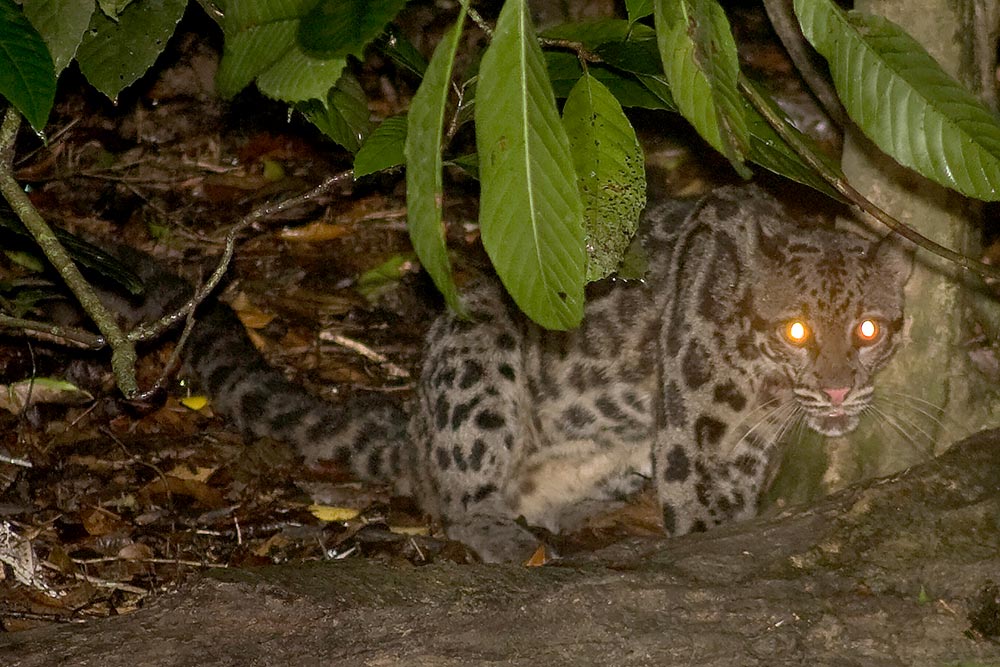
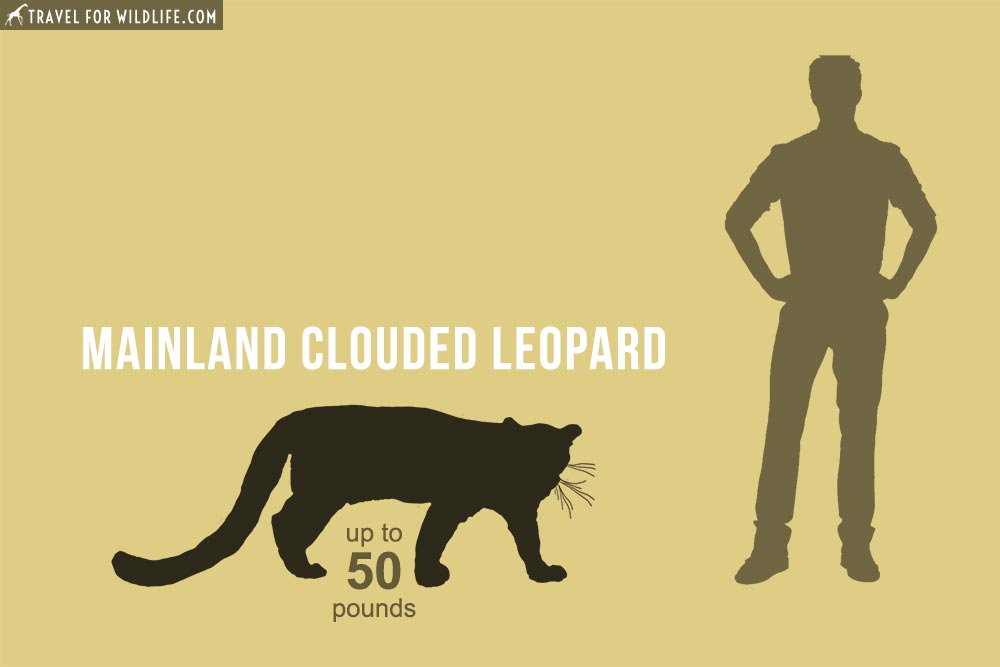
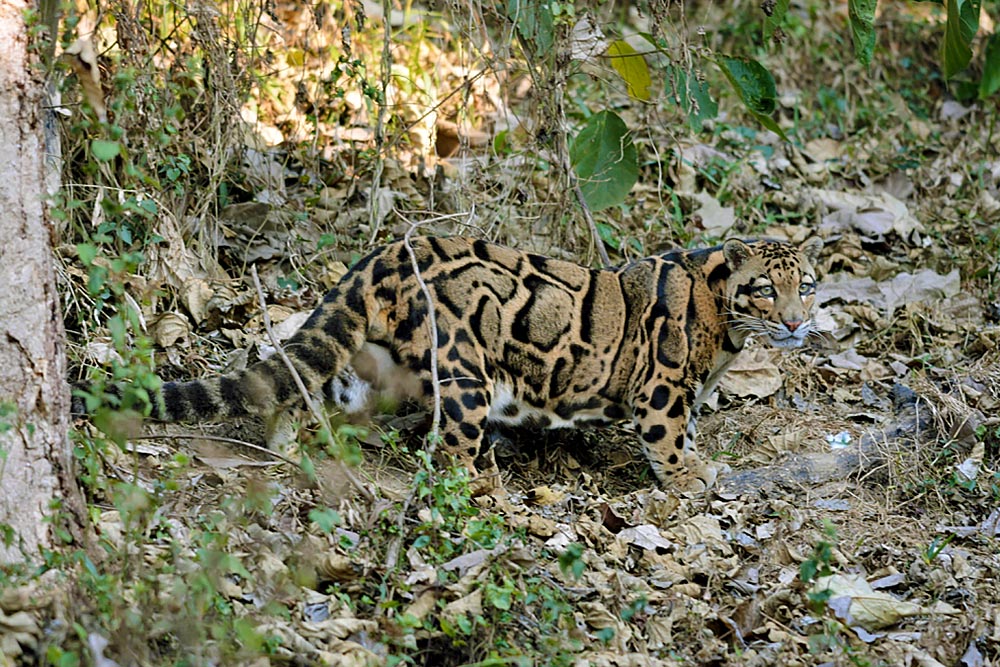
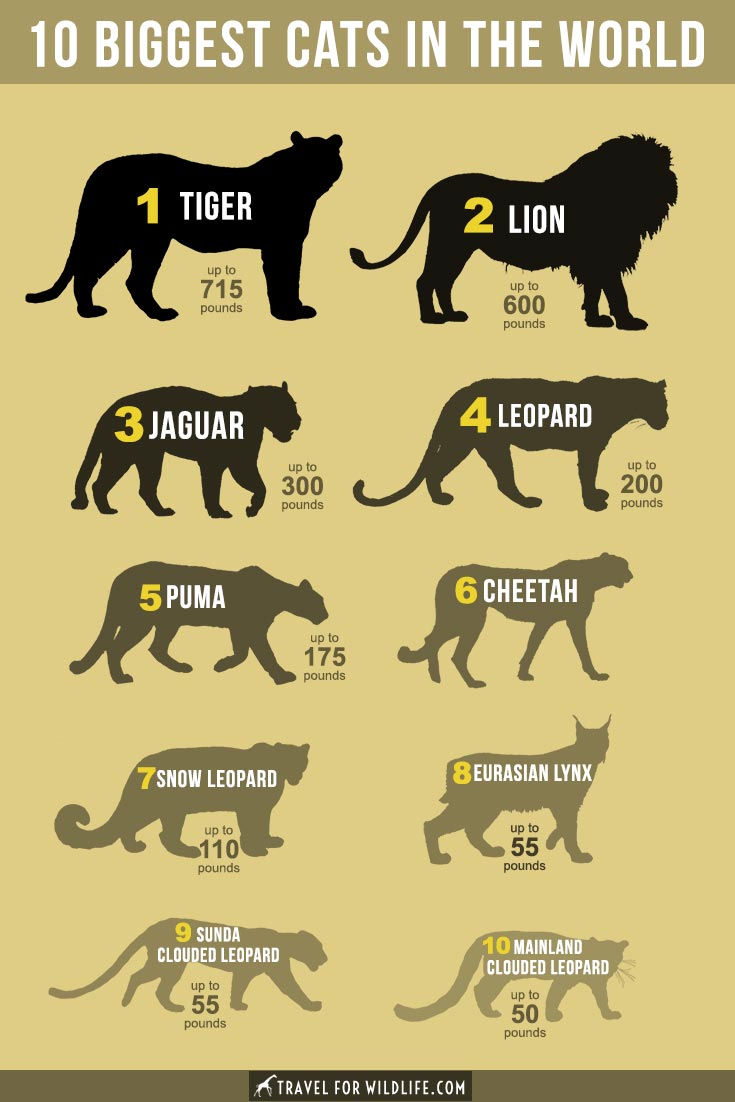
Jaden Hidalgo
Monday 19th of May 2025
Has god create these big cats?
Shaik Ashfaq
Monday 6th of November 2023
Wonderful, Amazing work bro.